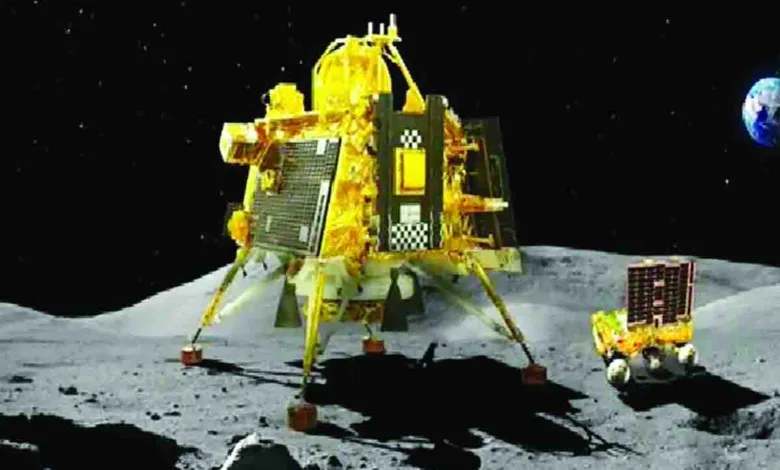Unveiling the cosmic gold rush: India’s lunar triumph and the global race for space mining

GUEST COLUMN
 Vir Singh
Vir Singh
The success of India’s Chandrayaan-3 mission and its unprecedented achievement of a landing on the southern pole of the moon have infused new energy into space exploration missions. Alongside space explorations, preparations for space mining are also underway. Governments and private companies from several countries are not only eyeing space exploration but also aiming to tap into the resources of celestial bodies. India, by successfully conducting lunar missions at minimal costs and exploring the possibilities of lunar water near the moon’s south pole, has opened several doors for future space exploration for the world.
India’s foray into space mining has initiated a global race to discover and extract valuable natural resources at low costs. Cutting-edge technologies, including robotic spacecraft, are being employed not just for current astronomical observations, mineral prospecting and scientific research but also for future space mining endeavours.
Technological innovations and advancements have led to significant reduction in the cost of lunar missions. India’s cost-effective lunar missions have drawn attention globally. The credit for cost-effective missions goes to reusable rocket technology and the digital revolution in spacecraft design. American companies like SpaceX and Blue Origin are developing super heavy-lift launch vehicles capable of carrying large payloads to Earth’s lower orbit. Several other reusable vehicles are in development worldwide.
Space resources primarily include water-bearing lunar regolith and regolith itself, which can provide materials for local use and export. Lunar water is a valuable resource because transporting water from Earth to space is logistically challenging. Lunar water can be separated into hydrogen and oxygen and used as rocket fuel.
Due to the moon’s weaker gravitational pull compared to Earth, extracting water from the moon and transporting it for use is relatively easy. This could potentially be a game-changer for space missions. In addition to water, lunar regolith can provide essential materials for future space missions, including food, water, air and construction materials. Space mining can also help reduce the environmental impact of local mining activities, especially for extracting rare and precious metals like nickel, cobalt and rare earth elements, crucial for clean, pollution-free energy sources on Earth.
In the United States, NASA’s MOXIE experiment on Mars has recently demonstrated the potential production of oxygen from the Martian atmosphere. NASA’s vision extends beyond the Earth’s moon to other planets and moons in the solar system, where mining of rare metals and resource extraction for energy sources is actively being explored. India is not far behind; after successful missions to Mars and the moon, Venus could be the next target. The immense success of the Mars and moon missions, coupled with the anticipated success of Aditya L-1, has ignited enthusiasm for space exploration in India.
Space indeed presents its environmental challenges. Rocket launches have the potential to affect the atmosphere and material returning from space can have an impact on climate. Additionally, space mining can disrupt celestial environments and pose various risks to spacecraft and astronauts. However, the potential benefits of space mining for Earth’s economy and stability are vast. As more countries join this endeavour, the race for space mining will become longer. The economics of space mining will require careful consideration of the environmental impacts. The hidden knowledge of ancient Indian texts may also hold the key to addressing the challenges of space mining, currently reliant on western knowledge.
Space mining is an exciting and critical field that can open up countless opportunities and possibilities for the future’s prosperity and development. Beyond the wealth of knowledge, space exploration missions can create a future filled with coexistence, peace and abundance, shaped through research and exploration.
(The author is professor emeritus, environmental science at GB Pant University of Agriculture and Technology. Views expressed are personal)






